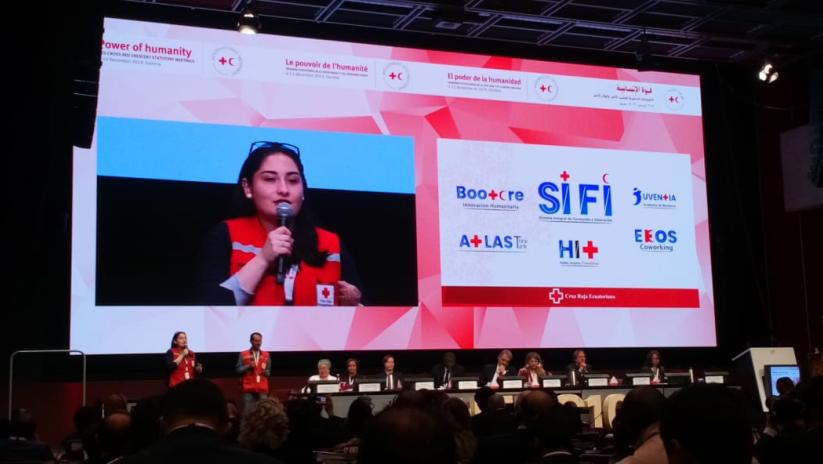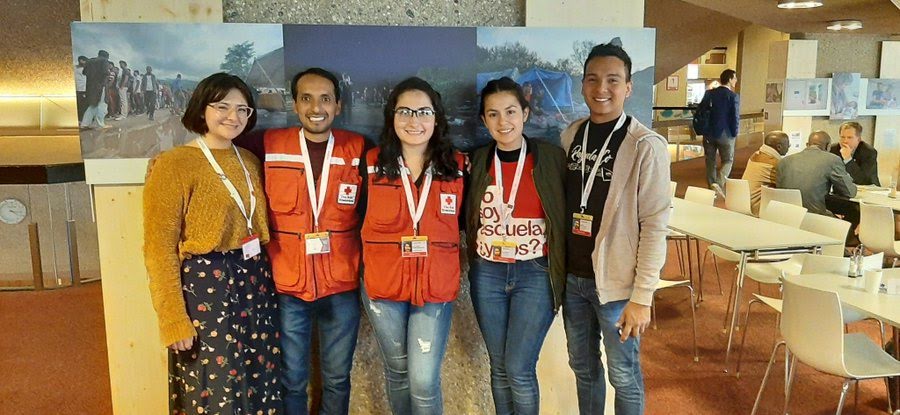
The Ecuadorian Red Cross (ERC), with the support of its volunteers, identified that the system in the National Society (NS) tends to be extremely bureaucratic and hierarchal when it comes to duties and responsibilities. This was limiting the ERC volunteers’ opportunities to voice ideas or be granted responsibility on certain tasks. As a result, volunteers would only stay at ERCS for about a year since the NS was not offering them interesting and engaging prospects. Henry Cáceres a volunteer at the Ecuador Red Cross, stated
"volunteers are the most important resource in the national society and we are struggling to keep them. This is why we need to create more spaces to explore, learn, and experiment"
Cáceres continued to say, “ERC is good in giving workshops and transferring knowledge, but not good at creating innovative spaces where people can take action and create for themselves. That is when we started thinking of ways to change this norm and the process of reverse innovation came to life”.

Persevering Through Challenges
Being drivers of change is no easy task and can be met with limitations along the way. Cáceres shared the major challenge faced was having to go digital due to the pandemic. He said, “all our plans stopped and we had to quickly adapt digitally to continue the innovative work we aimed to do”. He continued, “this is when we developed Catarsis; a digital platform for webinars, live streaming and podcasts”. Catarsis acted as a digital platform connecting volunteers and communities in a space where they can collectively share experiences and innovative ideas. Cáceres and Campoverde said, “after realizing we had the tools to go digital and the outcome of Catarsis was successful, we decided to adapt the hackathon to become virtual and were able to reach a more international recognition”. Cáceres explained that another main limitation was allocating resources, as there were no sufficient financial resources to work. He elaborated
"we had to work with the means available to us while thinking of other alternatives, such as free digital tools that we can access or developing effective products at a reduced cost"
He stressed on the importance of investments by stating “in order to be innovative and create innovation spaces for all, we need to invest. This is something we are aware of and are working on allocating sustainable solutions to keep our projects alive and running”. Moreover, Campoverde shared a challenge that was not expected. She stated, “organizational culture within all levels of the NS was one of the main challenges faced due to the slow bureaucratic process”. She elaborated,
"the ERC has been working in a certain way for many years, so when we approached volunteers with this new system and opportunity to investigate projects and transform their ideas to innovative tools, there was a lot of resistance"
Change is often met with resistance, but Cáceres and Campoverde are facing that challenge with ambition and motivation as they know first-hand the scope and impact of such an innovative process.
Advocating for Change
Cáceres and Campoverde are active pioneers of change. Their journey began by participating in the Innovation Challenge, that was launched by the International Federation of the Red Cross and Red Crescent Societies (IFRC)s in 2019, that has led them to the development of several virtual environments in the past year. “Promoting our work and showing how the Comprehensive Training and Innovation System (SIFI) can improve community development in NS is key” stated Cáceres. He and Campoverde were able to share their work and experiences through this journey at the Data and Digital Week hat was hosted by IFRC between the 19th and 23rd of April 2021. During their session, Cáceres and Campoverde elaborated on how using digital tools provided the opportunity to diversify and improve their innovative spaces and methods of participation, which in turn attracted a diverse number of volunteers. They are currently working towards creating more information around reverse innovation as well as developing virtual spaces that can self-sustain the cause. Lastly Cáceres stated, “our work is proof that such a process works and has great impact and we wish to share our experiences and advocate for such change within our wider Red Cross Red Crescent network”.
What is offered at the moment?
Currently, Cáceres and Campoverde, have set up a few virtually dynamic environments that assist the implementation of reverse innovation processes withing ERC. These spaces provide opportunities for participation and innovation through various platforms and methods.
Read this blog to find out more about these platforms for innovation and collaboration.




